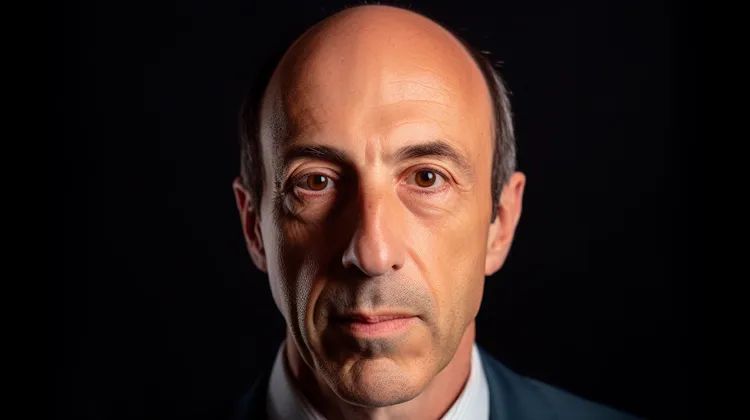
Gary Gensler: Regulating Crypto
Gary Gensler has emerged as a prominent figure in the world of cryptocurrency regulation. As the newly appointed chairman of the U.S. Securities and Exchange Commission (SEC), Gensler has taken on the responsibility of overseeing the regulatory landscape surrounding digital assets. His background in financial regulation and extensive knowledge of blockchain technology have positioned him as a key player in shaping policies that will govern the growing crypto industry.
Before joining the SEC, Gensler built an impressive resume in both the public and private sectors. He served as chairman of the Commodity Futures Trading Commission (CFTC) during the Obama administration from 2009 to 2014. During his tenure, he played a crucial role in implementing the Dodd-Frank Wall Street Reform and Consumer Protection Act, which aimed to increase transparency and accountability in the financial markets.
Gensler’s experience at the CFTC showcased his deep understanding of derivatives and commodities markets. This expertise has proved invaluable as he now faces the challenge of regulating the rapidly evolving world of digital assets. With cryptocurrencies like Bitcoin and Ethereum gaining traction and attracting widespread attention, Gensler’s knowledge and understanding of these markets is crucial in developing effective regulatory frameworks.
One notable aspect of Gensler’s approach to crypto regulation is his focus on investor protection. He has emphasized the need to safeguard retail investors from risks associated with the highly volatile crypto market. Under his leadership, the SEC has taken steps to crack down on fraudulent Initial Coin Offerings (ICOs), which were rampant during the crypto boom of 2017 and 2018. Gensler has also called for increased oversight and regulation of cryptocurrency exchanges to ensure they adhere to securities laws and protect investors’ interests.
Part of Gensler’s regulatory agenda involves clarifying the legal status of cryptocurrencies like Bitcoin and Ethereum. Many have questioned whether these digital assets should be classified as securities and subject to existing securities regulations. Gensler has previously stated that he believes many initial coin offerings should be considered securities and therefore fall under SEC jurisdiction. This stance could have significant implications for the industry, as it would require companies issuing ICOs to comply with strict registration and disclosure requirements.
In addition to his focus on investor protection, Gensler has also expressed a keen interest in promoting innovation and fostering a vibrant crypto ecosystem. He has recognized the transformative potential of blockchain technology and has expressed a desire to strike the right balance between regulation and innovation. Gensler has called for increased collaboration between regulators and the crypto industry to develop smart regulatory frameworks that promote innovation while ensuring investor safety.
Gensler’s role in regulating crypto extends beyond the borders of the United States. He has been an active participant in international discussions on crypto regulations and has engaged in conversations with other regulators to explore coordinated approaches. As the CEO of the Massachusetts Institute of Technology (MIT) Media Lab’s Digital Currency Initiative, Gensler has been involved in research and education surrounding blockchain technology and its potential applications.
It is important to note, however, that Gensler’s regulatory approach has faced criticism from some crypto advocates who believe excessive regulation may stifle innovation and hinder the industry’s growth. Gensler’s guidelines and enforcement actions may impact small businesses and startups that rely on cryptocurrencies for funding their projects.
In conclusion, Gary Gensler’s role as chairman of the SEC places him at the forefront of regulating the rapidly evolving crypto industry. His experience and expertise in financial regulation, particularly in overseeing derivatives and commodities markets, position him well to tackle the unique challenges posed by cryptocurrencies. With a focus on investor protection and a commitment to fostering innovation, Gensler seeks to strike a delicate balance between regulation and growth. As the crypto landscape continues to evolve, it remains to be seen how Gensler’s policies will shape the future of digital assets and their regulation.
10 thoughts on “Gary Gensler: Regulating Crypto”
Leave a Reply
You must be logged in to post a comment.
Gensler’s policies are going to crush small businesses and startups that rely on cryptocurrencies for funding. It’s going to be impossible to innovate under his strict regulations.
Gensler’s background in financial regulation is a red flag. He’s just going to bring the same flawed thinking to the crypto market.
Gensler’s classification of ICOs as securities is a major blow to the industry. It’s going to discourage companies from raising funds through token sales.
I can’t believe Gensler wants to regulate the crypto industry! It’s supposed to be decentralized and free from government control! This is just going to stifle innovation.
Gensler’s involvement in research and education surrounding blockchain technology doesn’t make up for his flawed regulatory approach. We need someone who truly understands the potential of crypto.
More government regulation? Just what we need. Gensler is just another bureaucrat trying to flex his power.
Gensler’s regulations are going to hinder the growth of the crypto industry. We should be embracing this technology, not trying to control it.
Gensler is completely out of touch with the crypto industry. His guidelines are going to strangle the potential of blockchain technology.
Gensler’s commitment to fostering innovation is just talk. His policies will only stifle the industry and prevent new ideas from flourishing.
Gensler’s understanding of blockchain technology is limited. He shouldn’t be making decisions that will impact the future of digital assets.